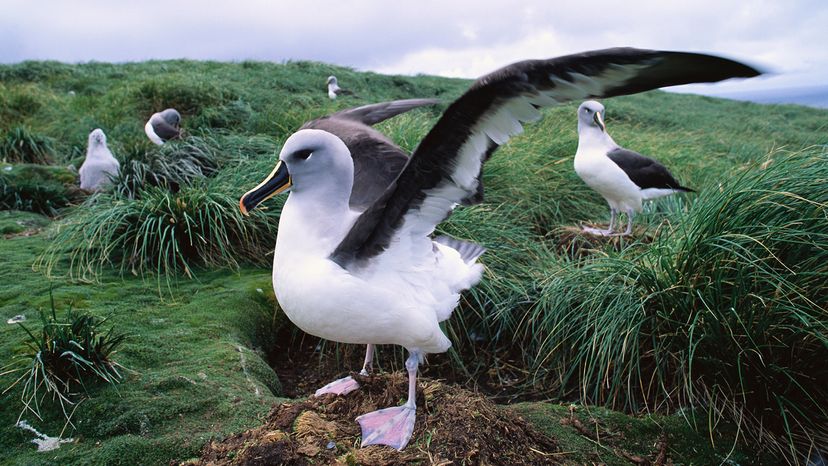Within the albatross family, there are several distinct subspecies of albatross, each with unique characteristics adapted to their specific environments. Here is the full list of albatross species recognized by the International Union for Conservation of Nature (IUCN):
- Snowy albatross (Diomedea exulans)
- Antipodean albatross (Diomedea antipodensis)
- Amsterdam albatross (Diomedea amsterdamensis)
- Tristan albatross (Diomedea dabbenena)
- Southern royal albatross (Diomedea epomophora)
- Northern royal albatross (Diomedea sanfordi)
- Waved albatross (Phoebastria irrorata)
- Short-tailed albatross (Phoebastria albatrus)
- Black-footed albatross (Phoebastria nigripes)
- Laysan albatross (Phoebastria immutabilis)
- Black-browed albatross (Thalassarche melanophris)
- Campbell albatross (Thalassarche impavida)
- Shy albatross (Thalassarche cauta)
- White-capped albatross (Thalassarche steadi)
- Chatham albatross (Thalassarche eremita)
- Salvin's albatross (Thalassarche salvini)
- Grey-headed albatross (Thalassarche chrysostoma)
- Atlantic yellow-nosed albatross (Thalassarche chlororhynchos)
- Indian yellow-nosed albatross (Thalassarche carteri)
- Buller's albatross (Thalassarche bulleri)
- Sooty albatross (Phoebetria fusca)
- Light-mantled albatross (Phoebetria palpebrata)
Here's a bit more about some of the most common albatross subspecies.
1. Snowy Albatross
The snowy albatross (formerly known as the wandering albatross), which has the largest wingspan of any living bird, has been the subject of extensive research due to its extraordinary migratory behavior. This species, which primarily inhabits the Southern Ocean, is often seen soaring around the remote sub-Antarctic islands.
2. Black-footed Albatross
To the north, the black-footed albatross thrives in the warmer waters of the North Pacific. Unlike the wandering albatross, this species has a much smaller wingspan but is still known for its impressive flying skills.
The black-footed albatross is a year-round resident of the Hawaiian Islands, where it nests on remote volcanic islands.
This subspecies has been studied for its foraging techniques, often diving deep into the ocean to catch fish. As a highly skilled predator, it demonstrates an extraordinary adaptation to life at sea.
3. Laysan Albatross
The Laysan albatross, closely related to the black-footed albatross, shares similar habitat preferences but is often found in greater numbers in the Hawaiian Islands. This species is notable for its striking white head and dark eye patches.
Laysan albatrosses, which are part of the Phoebastria genus, are particularly vulnerable to environmental threats due to habitat loss and pollution. Conservation efforts to protect their nesting grounds on islands like Midway Atoll have been critical in preventing further decline.
At the same time, the survival of these albatross populations depends on global efforts to reduce the dangers that they face, including plastic pollution.
4. Antarctic Albatross
Another notable subspecies is the Antarctic albatross, also known as the gray-headed albatross. This bird is typically found in colder waters around the southern hemisphere, particularly around the Antarctic Peninsula. It is known for its pale gray feathers and striking yellow bill.
The Antarctic albatross does not venture as far from its breeding grounds, focusing its efforts on the southern ocean, where it has a significant role in the ecosystem.
With the population of Antarctic albatrosses slowly declining, conservationists have been working to ensure that the delicate balance of their ecosystem is preserved.
